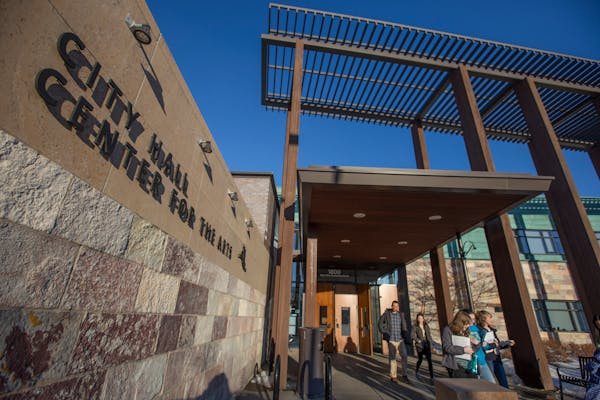Richfield and Bloomington may soon allow more types of housing in traditionally single-family areas, with the goal of making homeownership accessible — especially for lower-income families and people of color who historically were blocked from owning homes.
Richfield is considering allowing duplexes on lots now zoned for single-family and low-density housing, while Bloomington is tweaking its zoning code to decrease the minimum lot size for houses, require fewer parking spaces and make it simpler to get permits to build duplexes.
Council members in both cities will take public feedback and expect to vote on the new rules in January.
"The larger goal is to increase the diversity of our housing stock and make homeownership more accessible," said Melissa Poehlman, Richfield's community development director.
The efforts reflect a trend that's been growing in the last few years across the United States to make housing more affordable by easing density regulations and expanding housing stock.
Minneapolis became a leader in the movement in 2019, when the City Council approved its 2040 Comprehensive Plan, allowing duplexes and triplexes in low-density residential neighborhoods and eliminating single-family zoning. The plan, which could triple housing capacity in some neighborhoods, is being challenged in state court by environmental groups that argue it would increase polluted runoff and lead to more traffic congestion, harming air quality.
Bloomington and Richfield are not alone among metro suburbs looking to make more housing affordable. The Roseville City Council in 2021 voted to allow denser housing on some city lots, a change that some residents said would hurt established neighborhoods. Other suburbs are adjusting development restrictions to encourage housing on oddly shaped or blighted lots.
Outside the Twin Cities, the Rochester City Council in September changed zoning codes to reduce lot sizes, remove density limits and make it easier to develop multi-family housing projects.
Bloomington and Richfield officials say their moves will mean only incremental changes in local housing markets. But Brenda Lano-Wolke, executive director of the nonprofit Homes Within Reach, said every little bit helps when it comes to making homeownership more affordable.
"Especially in those communities, there are some very large lots that could easily accommodate a smaller footprint," Lano-Wolke said.
It can be easier for lower-income people to get a mortgage on a duplex if they're receiving income from a tenant, Poehlman said. And smaller building companies can better compete for smaller-scale projects — like a duplex — than for a typical five-story mixed-use development.
The proposed changes to Richfield's zoning code were inspired by the city's effort to help homeowners remove racially restrictive covenants from their house deeds through the Just Deeds Project, Poehlman said.
"Participation in that really brought to the forefront how the deck was stacked against non-whites in buying homes," she said.
Around the time state courts made those covenants illegal, she said, zoning ordinances on minimum lot size and bans on multifamily housing started popping up in various locations — including Richfield.
The median sale price for metro area single-family houses in November was $392,500, according to the Minneapolis Area Realtors, with the median townhome selling for $285,900.
Nearly three-quarters of residential property in the Twin Cities is governed by zoning ordinances that allow only single-family detached houses, according to a 2019 Star Tribune analysis of more than 100 metro communities.
Regulations such as lot size or the number of garage stalls are common throughout the metro area. On nearly two-thirds of the land where only single-family houses can be built, a minimum lot size of a quarter acre or more is required — at least twice the size of a typical lot in Minneapolis or St. Paul.
Those ordinances meant that Richfield, and many other suburban cities, wound up with mostly single-family houses and only a handful of duplexes, Poehlman said.
"Not everyone wants to or can own a traditional single-family home, and we need to create opportunities for those other types of families," she said, including families where multiple generations live together. Accessory dwelling units are allowed "everywhere," she said, so why not duplexes?
Bloomington has similar goals of building more affordable homes, addressing the racial homeownership gap and encouraging more pedestrian-friendly communities, said Glen Markegard, the city's planning manager.
When the city was first developed, he said, there were few restrictions on building homes. Many built in the 1940s and 1950s would not be legal under the minimum lot sizes and parking requirements enacted in the 1960s and 1970s.
Now city planners are reevaluating those standards in light of the city's affordable housing goals, Markegard said. Bloomington's proposed ordinance makes 12 tweaks to the current zoning code — including shrinking the minimum lot width from 80 to 60 feet and reducing the minimum lot size from 11,000 to 7,800 square feet; requiring two parking spaces per unit instead of four; and making it simpler to apply for a permit to divide lots and build two-family homes.
The ordinance wouldn't magically bring down sky-high housing prices, Markegard said, but it could help around the margins.
"Bloomington is built out, so any change at this point would have less impacts than if it had been made before the city was built out," he said.
There probably won't be major new developments in the city's low-density residential zones, Markegard said. But the zoning code changes could help make financial sense for builders to build smaller homes. For example, a builder looking to tear down a house on a large lot and replace it with a bigger house would have the option to divide the lot and build two smaller houses.
"Over time, that would increase housing options and affordability," he said.
8 months in jail for Blaine man who caused 120-mph crash hours after he was caught speeding

Daughter sues St. Paul, two officers in Yia Xiong's killing

